For several years now, sim-racing has been gaining ground in the world of video games and motor racing. These days, racing drivers train on simulators because they’re not only much cheaper, but also less risky for the driver. Spitting on a simu is certainly frustrating, but leaves no physical damage to the race car driver. This applies to many motorsport disciplines, and even to airplane pilots.
To be able to train on a simu, we need specific equipment that allows for a high degree of realism. And given that this discipline, sim-racing, has grown enormously since the 90s, many players have emerged on the simu peripherals market, including Simucube, Fanatec, ThrustmasterSimagic and Logitech. These brands have revolutionized the discipline we all love, each in their own way. Some have brought Direct Drivetechnology, others Load Cell cranksets, or magnetic sensors.
Some of the brands I’ve just mentioned are quite old, with some being over 20 years old, such as Fanatec, Logitech and Thrustmaster. These brands are considered by many to be the tenors of sim-racing, and they have a very large fan-base. But to succeed in any field, you don’t necessarily need 20 years’ experience. You just need the know-how, the technology and, above all, the passion to achieve your goals. Such is the case with Simagic, a player fresh from the sim-racing starting-blocks. In what follows, we’ll take a look at this brand and its products, and I’ll tell you whether it can be considered the ultimate driving simulation for racing fans on the small screen.
Simagic: history and first products
The Simagic brand was created in 2018 by Barry Lee, an engineer working in the automotive industry. Mr Lee had a passion for motor racing, but didn’t have the means to satisfy his thrill-seeking needs. It has to be said that motorsport is a discipline that requires an enormous amount of financial resources; the simple track-day can cost a few thousand euros for an amateur who already has a sports car, and I’m not talking about car competitions that have budgets of hundreds of thousands of euros for just one race weekend. That’s a lot of money.
So, how do you go racing without spending the equivalent of a weekend apartment? Well, sim-racing, that’s how. Mr Lee approached Chinese racing drivers – yes, the Simagic brand is Chinese – to set up a team, and subsequently his own company, to develop sim-racing products. With feedback from drivers and Mr Lee’s technical knowledge, Simagic released its first product: a base called the M10. Needless to say, the base was direct-drive, with a maximum torque of 10 nm, which is enough for a good driving feel.
Developing a base is all well and good, but you also need other sim-racing peripherals to go with it. Following the release of its first sim-racing product, Simagic set about developing an ecosystem orbiting around its M10. Thanks to the engineering prowess of Mr Lee’s team, the brand came up with a steering wheel, a Quick Release more or less borrowed from motor racing, and a pedalboard. This was followed by a whole range of sim-racing peripherals, with new steering wheels, new chainstays with different power ratings, shifters, cranksets and so on. Today, Simagic offers a complete sim-racing ecosystem, worthy of taking on the competition from Fanatec, for example.
Simagic’s product catalog
To be competitive in sim-racing, you need all the peripherals you need to race. We’re talking bases, steering wheels, pedals, shifters, handbrakes and more. Fortunately for Simagic, the brand takes into account the recommendations of the drivers who work with it.
Direct Drive basics
Let’s start with one of the most important elements of a sim-racing build: the base. Simagic’s catalog currently includes 3 entries:
- The Alpha Mini. The Alpha Mini represents the entry-level, in terms of power, of Simagic’s basic range. This sim-racing device uses a Direct Drive motor and produces 10 nm of maximum torque. This base replaces the brand’s first release, the M10, and moves into the rather entry-level segment with competitors such as Fanatec‘sCSL DD 8 nm, Moza Racing‘s R9 and the Logitech G Pro Racing bundle, to name but a few.
Its construction is entirely metal, with even carbon fiber as decorative elements. For in-game sensations, it’s pure bliss. The base is highly communicative, transmitting the slightest information emitted by the car to the driver. This is due not only to the base’s motor with a 1ms response time, but also to the fact that Simagic uses a QR practically derived from racing. The steering wheel is literally welded to the base; you have no movement, no flex, nothing at all. It’s pure bliss, I tell you.
Of course, all this comes at a price, and the Alpha Mini is a premium device. Priced at €629 incl. VAT, the Alpha Mini is an expensive base, much more expensive than the competition. But at the same time, this is a premium product developed by professional drivers and racing enthusiasts, and the accuracy of feel is priceless.
- The Alpha. This base represents Simagic’s mid-range in terms of power. Developing 15 nm of torque, the Alpha is perfect for all budding racers and professional pilots wanting to train in virtually real-life conditions. Design-wise, it’s exactly the same as its little sister, the Mini. In fact, this is the case with all Simagic bases: they all look the same, with the only differences being in size and power.
The Alpha spits out 15 nm of maximum torque and finds itself in a segment more or less devoid of competitors. Sure, you’ve got Moza Racing’s R16 and its 16 nm of torque, but not much else. Fanatec is absent from this power segment, and Simucube offers its Sport base with 17 nm of torque, but this is positioned in a completely different segment: ultra-premium.
As far as driving sensations on the Alpha are concerned, we’re superbly well served. The 5-pole motor develops 15 nm of torque with a millisecond response time. It’s just like an Alpha Mini but with more muscle: the base is very communicative, and on all levels. Between trajectory changes, bumps, jolts, force feedback and all the information and feedback you can transmit to the steering wheel, you’ll feel every detail produced by the car. It’s thrilling, especially if you’re coming from a less powerful or belt/gear-driven base.
A little price information: the Alpha costs €929 incl. VAT from Simagic’s supplier in France, which is more expensive than the Moza R16 at $800 excl. tax, and less expensive than the Simucube 2 Sport at over €1,200 incl. VAT.
- The Alpha U. This is the top of the range from the Chinese manufacturer. To compete with other brands in their own segment, Simagic had to develop a base with over 20 nm of torque. We are therefore pleased to present the Alpha U, with its 23 nm maximum torque.
Simagic has hit the nail on the head with this base, and had no room for error given the fierce competition in this segment(Fanatec Podium DD1 and DD2, Simucube 2 Pro, Moza Racing R21). I’ll briefly touch on pricing before moving on to sensations. The Alpha U costs €1150 inc. VAT, giving it the price advantage over Fanatec(DD2 at €1500), Simucube(2 Pro at €1438) and Moza Racing (R21 at $1000 ex. VAT).
As far as sensations are concerned, the Alpha U fares rather well against manufacturers with far more experience than Simagic. The base communicates everything the car you’re driving does, regardless of the title you’re working on. You’ll feel all the details communicated to your hands very realistically. As far as I’m concerned, it’s just like other Simagic bases, but more powerful and without clipping.
Simagic steering wheels
Given that Simagic had succeeded in its masterly feat of releasing highly competitive, top-quality bases, there was a need for steering wheels that could be attached to them. Unlike Fanatec, which more or less offers a steering wheel for every motorsport discipline, Simagic has 2 categories of steering wheel: those for rally/touring, and those for F1/GT.
- The GT1, GTS and GTC are steering wheels more or less for fans of rallying and touring in sim-racing. First and foremost, these steering wheels come in many variants, and I’m only going to discuss the “global” versions, otherwise the article would be too long.
These steering wheels all have diameters as close as possible to those of cars, with either 30 or 32 cm, and a round or semi-open design. In terms of materials, we have aluminum, with leather or alcantara. Controls are a dazzling array: buttons, switches, paddles, encoders and more. It’s truly complete and perfect for all budding riders.
In terms of price, you’re looking at €450 – €560 for one of the wheels in this category, which is still pretty expensive compared to the competition, but it’s also very premium.
- The GT4, FX and FX Pro are steering wheels inspired by F1 and GT3/GT2. The design is rectangular, with diameters in the 30 cm range, and noble materials such as carbon fiber and aluminum.
Controls are just as rich as on rally/touring category steering wheels: lots of buttons and controls, 4 or 6 paddles and a screen (on the FX Pro) for telemetry. These are truly premium peripherals, which don’t pale in comparison with the competition from Fanatec, Moza Racing or Simucube. What’s more, their ergonomics are simply outstanding, with real study and attention to detail in the placement of buttons, switches and all the rest.
Prices for Simagic’s GT and F1 steering wheels range from €580 to €900. It’s hard on the wallet, but these are still premium-quality products.
- Simagic’s 300 series: I’ll briefly mention Simagic’s 300 series steering wheels, as they represent the manufacturer’s entry-level range. Basically, you get 3 steering wheels with no controls, in different shapes and at a price of €140 incl. VAT.
Other sim-racing accessories
Of course, Simagic offers other sim-racing accessories in its catalog, such as a QR derived from the competition, several Load Cell cranksets, shifters, a handbrake, mounting accessories and so on. The Simagic ecosystem is really complete as far as I’m concerned, and I like it a lot.
For all its quality peripherals, why is Simagic still a B-movie player?
Having read everything I’ve just told you about Simagic’s peripherals and products, you’re bound to think that the brand is popular among sim-racing fans, and the answer is rather yes and rather no.
Internationally, Simagic is a well-known player, recognized even for its quality products. But in France, the manufacturer of sim-racing peripherals flies under the radar, detected only by hardcore fans of the discipline. The reason is simple: poor communication.
I don’t need to introduce you to brands like Thrustmaster, Logitech or Fanatec, because they’ve been in the game for over 20 years, and all the investment they’ve made in their image and communications is now paying off. Except that Simagic doesn’t know how to sell itself to the general public, for the simple reason that the Chinese manufacturer doesn’t have a brand image. If you don’t have a presence on social networks, in advertising campaigns and everything else related to communication, no one will know you exist, and that’s what penalizes Simagic.
This manufacturer’s products are excellent, far superior, in my opinion, to what Moza Racing does, for example. If you’re a bit of a sim-racing fan, you’ve almost certainly heard of Moza from virtually everyone in the discipline, and I’m sure the word Simagic has come up in a conversation or two with pro racers. And this absence has a major impact on the manufacturer.
What’s more, Simagic doesn’t sell its products directly to its customers, but does so through a portfolio of worldwide distributors. The snag is that the one chosen for France is not able to showcase the brand’s full potential, which inevitably leads to losses of market share, and Simagic finds itself beaten to the punch by brands like Moza Racing that don’t have the same level of expertise or quality of finished products. But make no mistake! Moza makes excellent sim-racing peripherals, but Simagic is simply better for me.
My Simagic review
Even though the brand has only been in the game for 5 years, its experience would make any brand with at least 10 years blush. Between engineering prowess and the experience of real racing drivers, Simagic still has a long life ahead of it.
As far as its presence and market share in France are concerned, I think a good marketing push is essential to elevate the brand to its rightful place. It’s simple: you’ve got excellent basics, ergonomic, competition-inspired steering wheels, a QR limit copied from motorsport, superb shifters and a finely tuned ecosystem. All that’s left for Simagic to conquer the hearts of French racers is presence and image. Personally, I love this brand’s products and recommend them to anyone looking for a superbly realistic experience – if you can afford it, of course.

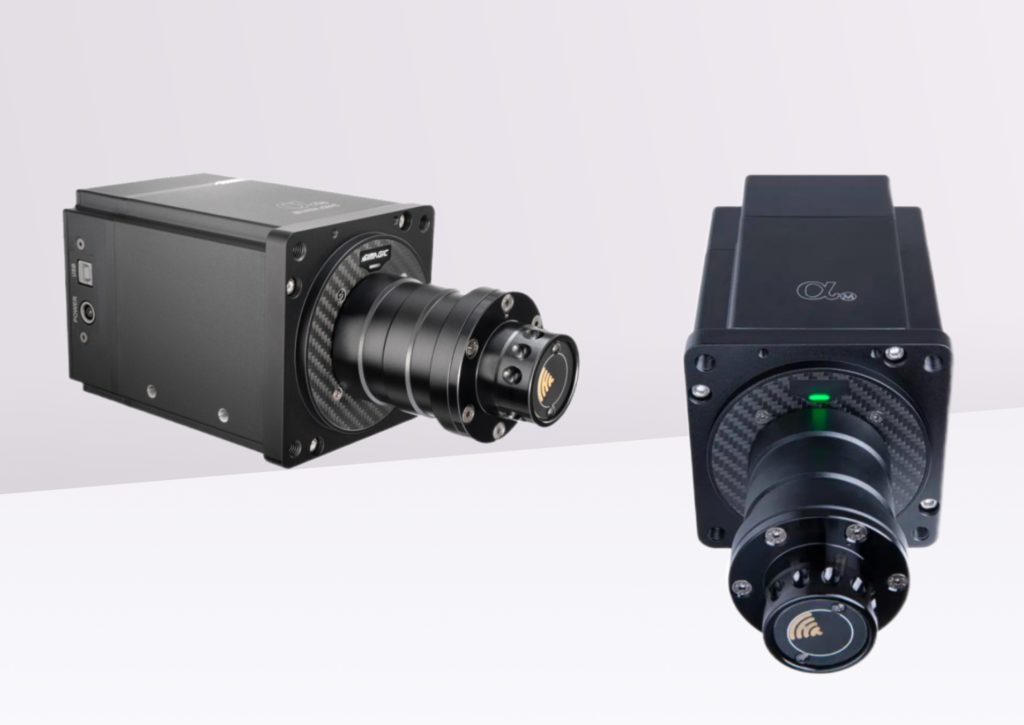
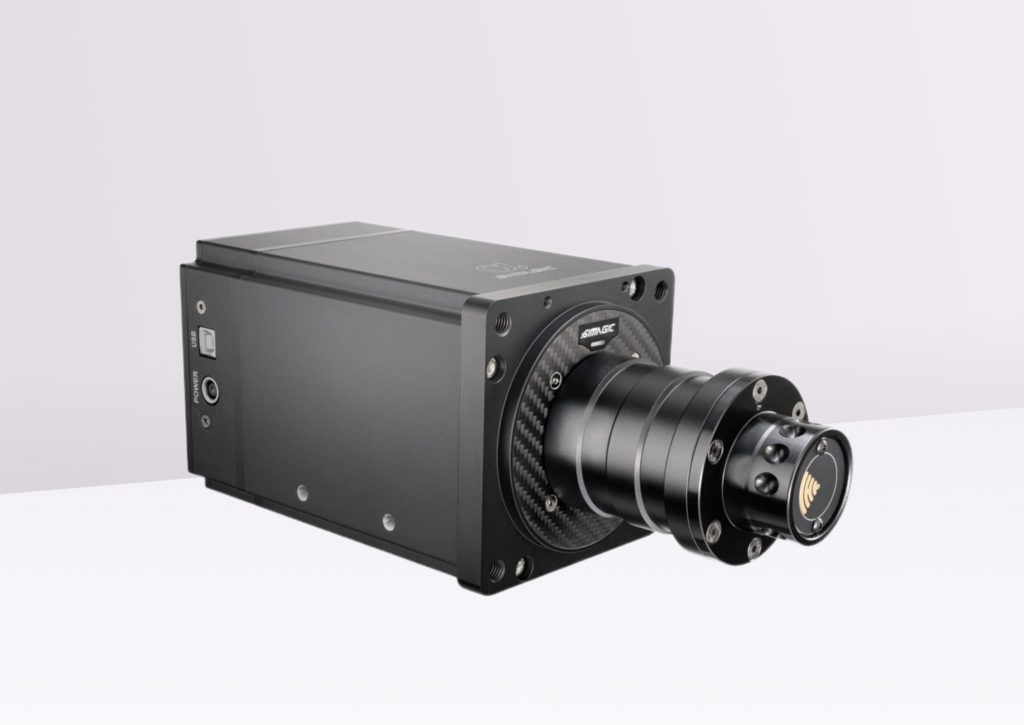



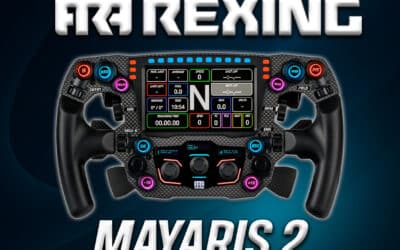
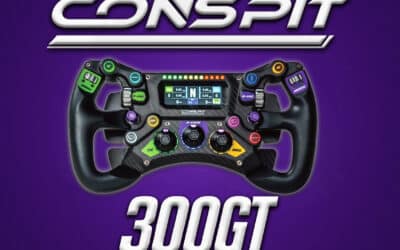



0 Comments